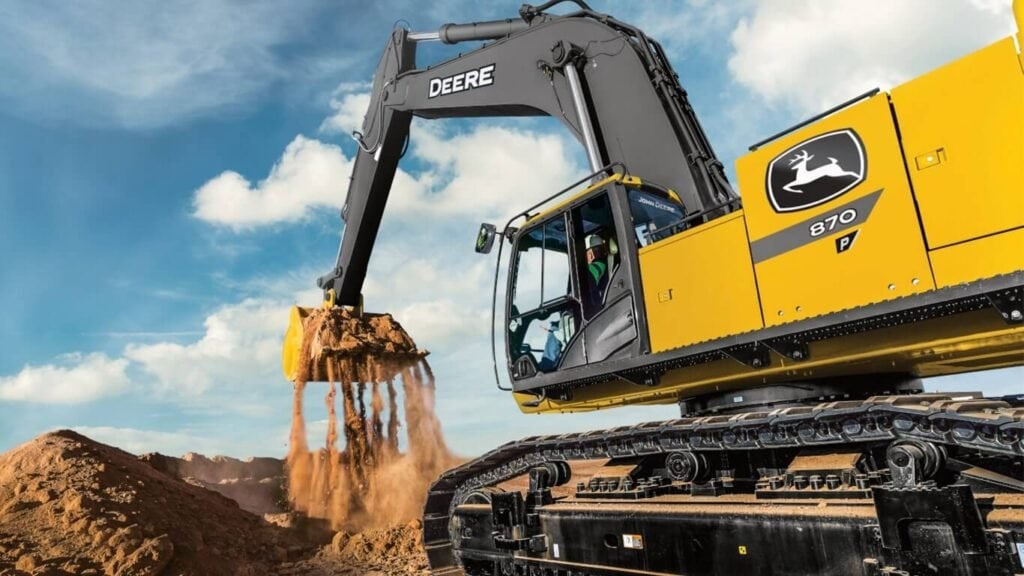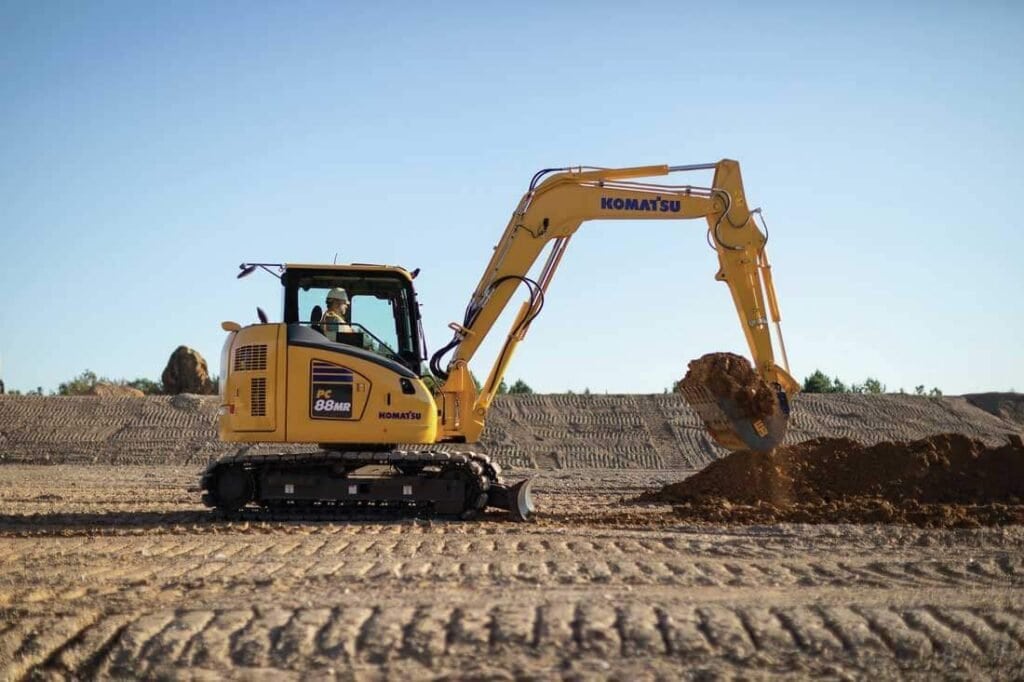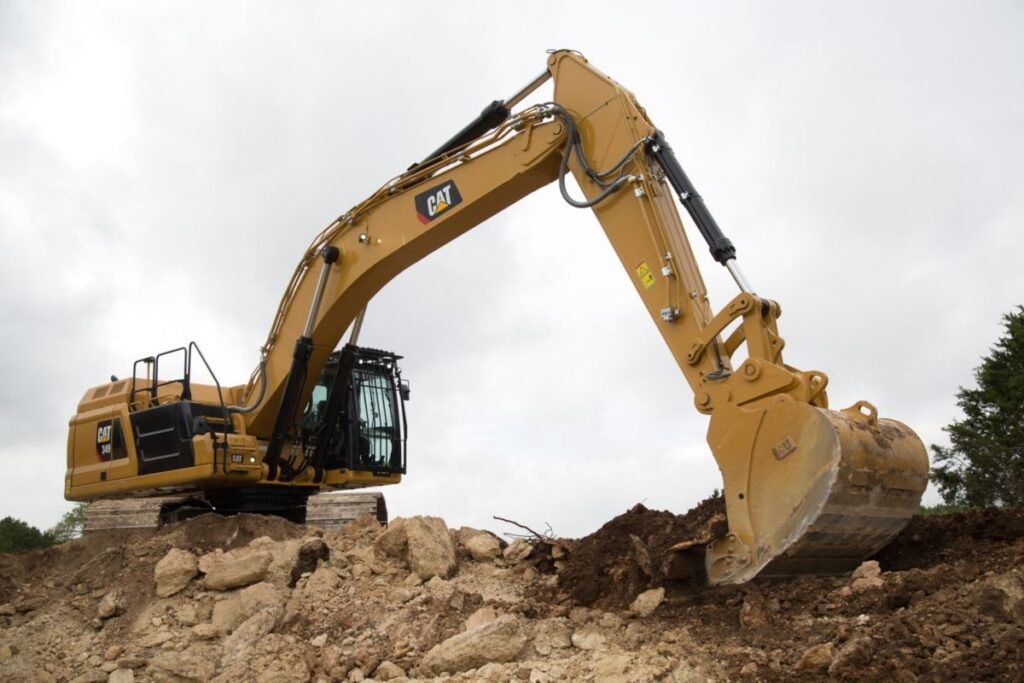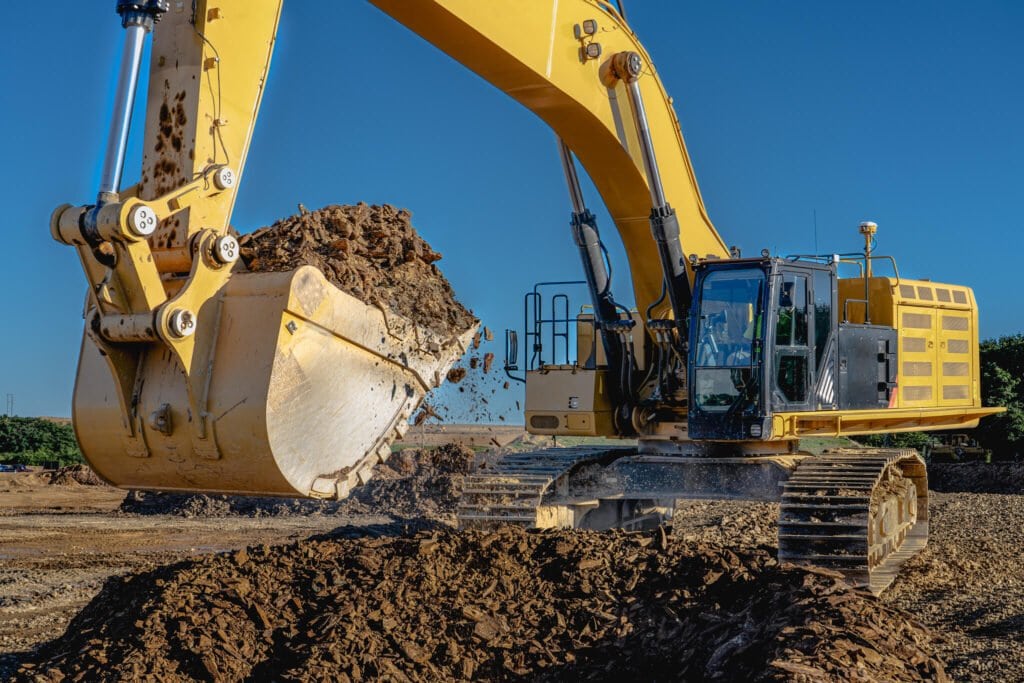Construction delays kill projects. Manual excavation is hard work and dangerous. Automated excavators offer precision, speed, and safety—changing how construction companies worldwide attack digging.
An automated excavator is a machine powered by AI, sensors, and GPS that performs excavation with minimal operator input. It reduces labor costs, enhances safety, ensures consistent accuracy, and boosts productivity. Construction companies benefit from reliable performance and lower risks, making automated excavation a practical and future-ready solution.
Curious how these machines work and why they’re trending? Let’s explore their functions, benefits, challenges, and practical value worldwide.

How Does An Automated Excavator Work?
An automated excavator is more than a standard excavator machine. It incorporates advanced technologies such as GPS, smart sensors, and artificial intelligence to perform tasks with minimal human guidance. While a traditional hydraulic excavator, or trackhoe as some call it, requires manual control at all times, automation enables the system to map terrain, plan digging, and adjust movement on its own.
This is executed through several systems working together: LiDAR scans surfaces, AI figures out where to dig, and the hydraulics on the excavator move the machine with precision. Rather than manually doing everything, the operator supervises.
To help you understand the difference, let’s compare an autonomous excavator to a manual one. If you’ve ever operated a traditional excavator type (dragline excavator, railroad excavator, construction digger), you’re always driving and controlling every movement with joysticks. This can lead to fatigue and mistakes. With automation, you gain smoother workflows and consistent performance, whether we’re talking about a Cat excavator, a Komatsu excavator, or a Volvo excavator.
Companies such as Built Robotics excavator solutions are at the forefront of fully automated technologies. They retrofit existing excavators into robotic excavators, making them semi- or fully autonomous. This is particularly important in areas where finding skilled excavator operator jobs is difficult because of the constant need for an operator.
Even the smaller machines are starting to see the benefits. A mini excavator or micro excavator might have assistance systems that help simplify controls, making it easier for less experienced operators to use. For example, a Hitachi mini excavator or a Kubota mini excavator might have semi-automated grading functions.
It’s not just the big units like the Cat 390 long reach or 13 tonne excavator that are getting help. Even the smallest mini digger or Cat 315 for sale are starting to have this smart assistance. As it continues to evolve, both people buying an excavator for sale and contractors debating excavator vs backhoe are going to find more and more ways to eliminate mistakes and get more work done.

What Are The Main Benefits Of Automated Excavators?
The benefits of automated excavators go beyond convenience. They impact productivity, they impact cost-efficiency, they impact jobsite safety. And let’s be honest, those are the reasons people buy things, right?
You don’t need as much labor, the precision is better, you save on excavator service cost, you have fewer accidents, and you can run it for longer hours, which helps you get better results without using as much stuff.
One big benefit is the savings. Normally, with manual excavation, you have to have a couple of guys to help, and they need to be good. That adds to your excavator with operator cost in a big way. The automated excavation is cheaper because it requires less labor. Whether you’re a contractor who’s constantly looking up mini excavator rental costs or you’re trying to compare excavator rental vs. purchase, automation saves you money in the long run.
Another benefit is precision. An autonomous excavator doesn’t just dig a hole; it calculates the depth, slope, and alignment for you. If you need something graded, imagine how many hours it takes with a manual track hoe. Well, it’s going to take less time and be done with fewer errors with an autonomous excavator. Whether you’re trying to buy a Cat 323D price project in the Middle East or you’re running a Sany excavator on a job site in Africa, you’re getting a better quality outcome.
The next one is safety. Now you’re going to do remote operation and keep people out of harm’s way. When you get into hazardous conditions like unstable terrain or (God forbid) a contaminated site or something like that, you can keep people out of harm by using a robotic and automated excavator. This becomes important in big operations where you might have a Cat 330 excavator for sale, a Cat 320 excavator for sale, or a Cat 390f specs.
The last thing is flexibility. Whether you’re looking at a mecalac excavator in Europe or a Chinese excavator being offered at very competitive prices, you have a lot of options here. Even the niche machines like a temu excavator, temu mini excavator, or having a mini case excavator or specialized case excavator sizes here, all those are eventually going to start to come out. Medieval contractors can turn to an excamini excavator size guide to compare models from the cat 308 excavator to getting into something like a cat 390 long reach.
Automation also means you can run 24 hours a day. That digger doesn’t need to sleep; it just needs power and to be greased up. It doesn’t take a nap. That’s a big deal. If you’re a business owner and you’re looking up excavator for sale or cat excavator sale, whatever it is, you need to have machines that perform and give you a return on your investment.

Are Automated Excavators Cost-Effective For Construction Companies?
Many construction CEOs and contractors wonder if investing in an automated excavator pays off. The upfront price is higher compared to buying a used excavator or browsing cat 320f price listings, but the value comes in the long-term savings.
Although automated models cost more initially, they reduce labor, fuel, rework, and downtime. These long-term savings often outweigh the initial investment.
Let’s break down the costs. You might look at standard excavator prices, or for a manual machine, you might see that the price is less (especially if you see a cat 308d for sale or cat 315 for sale). However, when you consider operator wages, the inefficiency of the fuel, and the downtime, the excavator with operator cost can get up there super quick.
Automation reduces those hidden expenses. Maybe a volvo excavator with autonomous assistance costs more upfront, but over a five-year period, you save money on fuel and avoid human error. So does a komatsu excavator or sany excavator with AI outperform a cheaper manual model? Yes.
For small contractors, renting is often the best option. A lot of people compare mini excavator rental cost versus purchase. In many cases, automated rental units could cost more per day, but because they are so much more efficient, you end up spending less on rental. This is especially true with compact models such as a mini excavator for sale, excavator mini, or a kubota mini excavator.
Resale value also matters. People looking for “Cat 323f price” or “Pelle Cat 320 for sale,” understand that newer models hold their value better than outdated manual ones. Even if buying used, a used excavator with automation features is more appealing in the excavator for sale market.
The decision comes down to return on investment. If you are undertaking large infrastructure projects with a Cat 390 long reach or a cat 330 excavator for sale, the automation is worth it because precision and uptime dramatically impact your profits. For smaller projects, you may still opt for a manual or semi-automated model, but the industry is trending toward automation because it pays off.

What Challenges Do Automated Excavators Face?
Despite all the advantages, automated excavators are not being rapidly adopted across the globe. The reason is that there are barriers. The barriers include the high upfront price, maintenance complexity, finding technicians with the right skills, and the fact that they are not readily available in developing markets.
First and foremost would be the cost. We’re talking about a cat 323f price or a Cat 320F price. A Cat 320F price with automation is a lot more expensive than a manual used excavator. You think about contractors in places like Peru or the various African markets, instead of a cat excavator sale or temu excavator, they probably would prefer something a little cheaper.
Second is maintenance. Automated systems rely on software, sensors, and AI modules. With a traditional hydraulic excavator like a Cat 320, most mechanics can work on it. But when you start talking about a built robotics excavator or autonomous excavator, you need somebody with specialized knowledge to do that. It’s tough enough for most people to find a guy who can fix a transmission, let alone an AI module for an excavator, especially in the developing markets.
The third barrier is availability. The model is still not widely distributed. When you hop into the excavator cat, case excavatrice sizes, or a liebherr excavator, you’re hopping into something you can find just about anywhere in the world, especially in developed countries. But, seeing a fully automated excavator is still relatively rare, even out here.Concatenated Formula
Operator training is a challenge as well. While automation reduces workload, it doesn’t eliminate the need for skilled supervision. Contractors need operators who understand both manual control and automated systems. Training programs for excavator operator jobs are evolving, but they take time to develop.
Cultural acceptance would be reason number five. People just don’t understand it. They don’t see the value in it yet. They trust the cat 308 excavator. They love to see that cat 330 excavator for sale posting or a case 160 excavator. They don’t take the risk on the newer, sexy, automated tech.

Is An Excavator Manual Or Automatic?
One of the most frequently asked questions from prospects is whether the excavator is manual or automatic. Up to now, with a few exceptions, most excavator types (dragline excavator, hydraulic excavator, trackhoe) have to be run manually. They require skilled labor. But, with the advent of modern technology, you can now get both manual and automatic in the different excavator sizes.
Most excavators are manual. You have to operate it. However, the new ones, and they are coming out worldwide, are semi-automatic or fully automatic. Now companies have a choice between traditional manual, which you 100% control, and automated, depending on what you are doing with it.
Overall, manual machines still dominate the excavator for sale market. Businesses often buy a cat excavator sale listing, such as a cat 315 for sale, cat 308d for sale, or cat 330 excavator for sale, because manual models are cheaper and easier to maintain. Also, excavator operator jobs require manual skills, making manual machines more practical for companies in developing markets.
However, automation is slowly but surely making inroads. We’re starting to see hybrid solutions, where machines blend manual control with some automation. So, you might buy a Volvo excavator or Excavatrice Komatsu that includes GPS-guided digging systems to help you dig faster. This is particularly helpful when comparing a mini excavator versus a micro excavator, or even when looking at a temu mini excavator for lighter jobs.
You also see growth in automation in places with high labor costs. In North America or Europe, construction companies might buy built robotics excavator conversions which turn your current machine into a semi-autonomous system. In Peru or parts of Africa, they still buy manual chinese excavators or sany excavators because the price and performance match their available labor costs.
Ultimately, the decision to choose manual or automatic depends on what you need for your project, your budget, and what’s available in your area. You may be able to justify the cat 323f price or get the cat 390f specs with automation on a massive job site. But when you’re a small contractor, you may stick with manual machines like a kubota mini excavator or a hitachi mini excavator to keep your costs low.

What Not To Do When Operating An Excavator?
Operating an excavator is dangerous. Using a mini excavator, hydraulic excavator, or advanced robotic excavator, safety errors lead to accidents, expensive damage, and downtime. You want to avoid these costly mistakes to keep your employee and your machines safe.
Never overfill the bucket, skip inspections, or operate on unstable ground without proper precautions. Skipping safety leads to accidents, machine failures, and more money out of your pocket on an expensive excavator service call.
One of the most common mistakes is overloading. A Cat 308 excavator or Cat 320F price model has strict load limits. If you go over those limits, you damage the hydraulics, burn more fuel, and drive up your overall excavator price with premature repairs.
The mistake of not doing daily inspections will cost you. Even the tough cat excavators, Volvo excavators, or Sany excavators need a look every day. Neglecting maintenance on tracks and the track hoe track itself or components will eat them up fast.
Operating on unstable ground is dangerous. The Cat 390F specs and Pelle Cat 330 for sale are heavy, and if the ground isn’t stable, you can easily tip over. Smaller options like the mini excavator for sale or Kubota mini excavator may seem less dangerous, but they’re still a problem on slopes.
Another “don’t” is neglecting operator training. Some contractors throw operators into big models like the Cat 315 for sale or the Cat 390 long reach without proper training. Doing this not only increases accidents, but it also decreases efficiency, driving up both your project costs and the excavator’s operator costs.
Lastly, avoid improper storage and neglecting idle machines. Whether it’s a case excavator-sized machine or a temu mini excavator, leaving equipment exposed without proper care shortens its usable life. If companies identify with these mistakes, they’re probably leaving money on the table in regard to their return on investment and comparing an excavator for sale.
In short, running an excavator—manual or automated—is serious business. By not making these mistakes, we stay safe, save money, and get the most out of every excavator cat, Komatsu excavator, or Liebherr excavator on the job site.
Résumé
Automated excavators increase efficiency, safety, and profitability. Whether you’re buying new or used excavators, understanding their benefits, costs, and safe operation will help you to succeed in the worldwide construction markets.